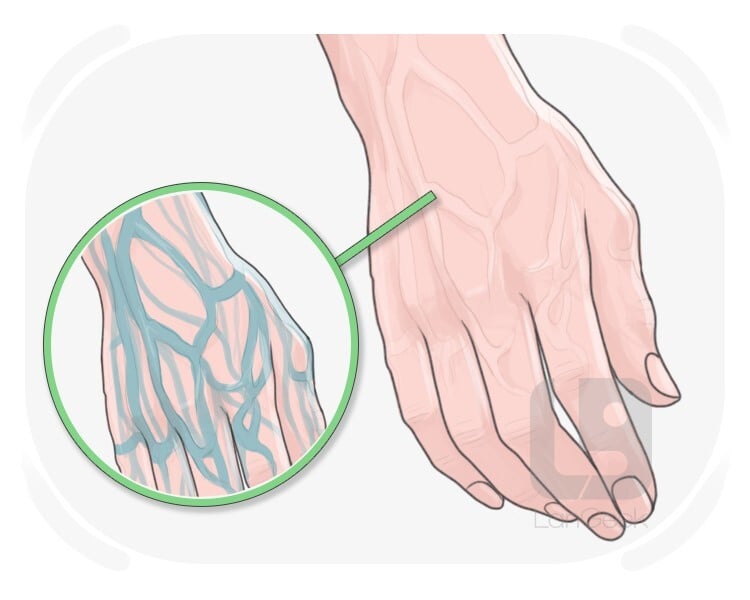Vein
Exempel
Veins help move blood from the legs and arms back to the heart.
Ådror hjälper till att flytta blod från benen och armarna tillbaka till hjärtat.
Blood clots can form in veins, which can be dangerous if they travel to other parts of the body.
Blodproppar kan bildas i venerna, vilket kan vara farligt om de färdas till andra delar av kroppen.
02
nerv, åder
a rigid, branching structure that provides support and strength to the wing, allowing for controlled flight
Exempel
The dragonfly 's wing veins create a delicate lattice.
Entomologists study the pattern of veins on butterfly wings.
03
åder, stil
a distinctive style or manner
Exempel
The poem was written in a humorous vein.
She spoke in a reflective vein during the lecture.
04
åder, malmåder
a layer of ore between layers of rock
Exempel
The miners extracted gold from a vein in the mountain.
The vein of silver ran deep underground.
05
bladskelett, åder
any of the vascular bundles or ribs that form the branching framework of conducting and supporting tissues in a leaf or other plant organ
Exempel
The leaf 's veins transport water and nutrients.
Maple leaves have prominent veins visible on both sides.
to vein
01
ådra, marmorera
make a veinlike pattern
Exempel
The artist veined the leaves with fine ink lines.
Chocolate can be veined with caramel for decoration.
Lexikalt Träd
veinal
veinlike
venous
vein





























